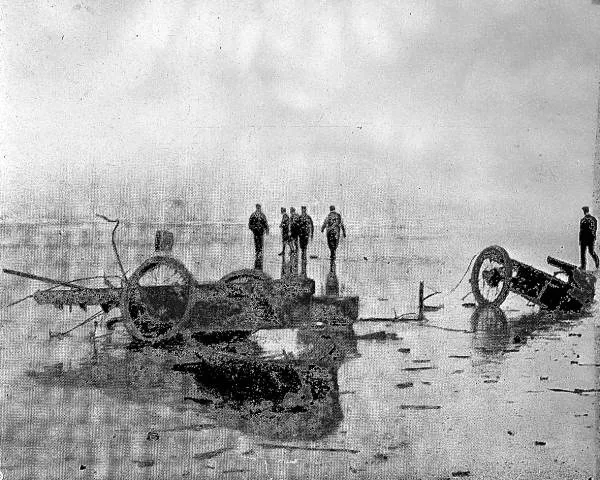Why Did People Think Steam-Powered Cars Were a Good Idea?
In the early days, steam cars were as common as gas ones. Why aren’t we driving them today?
:focal(357x197:358x198)/https://tf-cmsv2-smithsonianmag-media.s3.amazonaws.com/filer/a6/b7/a6b7cf0b-07ab-4040-af08-3b0a89ccbf41/n041921.jpg)
In the early days of automobiles, there was an alternative to gasoline: steam power. In fact, on this day in 1906, a modified Stanley Steamer, one of the more popular steam-powered cars, set the land-speed record for automobiles.
Moving at the speed of 127.66 mph, Fred Marriott drove the car to set a record that wasn’t beaten until four years later by a gas-powered Benz, writes Matt Simon for Wired. Marriott’s record wouldn’t be beaten by another steamer until 2009.
He’d modded a popular consumer car, produced by the Stanley Motor Carriage Company between 1897 and 1924, Simon writes.
The car wasn't perfect. “Such steam-powered automobiles, which were at one point manufactured by 125 different firms, could take up to half an hour to light the pilot, fire up the boiler and build the requisite pressure to move,” he writes. Still, steam provided a cleaner and more reliable alternative to gas-powered cars, which were hard to drive and a pain to hand-crank.
Here’s Simon’s account of the day:
Marriott set the record from a rolling start on the hard-packed sands of Florida’s Ormond Beach, just north of Daytona Beach. His Stanley Steamer Rocket was 16 feet long and 3 feet wide, and had it not been for the wheels, spectators may have mistaken the thing for an upside-down canoe, especially since it was sitting next to the water. But once that raucous boiler got going, propelling the beast one mile in just 28.2 seconds, they realized it probably wasn’t a canoe.

If things had gone another way, maybe we’d all be driving steam-powered cars. Why aren't we? The answer: Henry Ford and the assembly line, Simon writes.
Ford figured out a way of mass-producing cars for the burgeoning market, and in some ways that was a much bigger innovation than the Model T (which, by the way, was six times cheaper than the Stanley Steamer thanks to Ford’s innovations). As is still true today, the scale required to mass-produce vehicles discouraged innovation in cars that weren’t the kind already being mass-produced. Now we have fairly developed gas-powered cars, but could steam’s deficiencies have been remedied with more R&D?
“Original steam cars needed huge, heavy boilers to withstand the heat and pressure, and even small steam cars weighed a couple of tons as a result,” writes Sebastian Anthony for ExtremeTech. “With modern materials, steam cars could be as light as their [internal combustion engine] cousins. Throw in an advanced condenser and some kind of flash boiler, and it should be possible to build a steam car with decent efficiency and a warm-up time that’s measured in seconds rather than minutes.”
Sure would beat ever having to line up at the pump again.